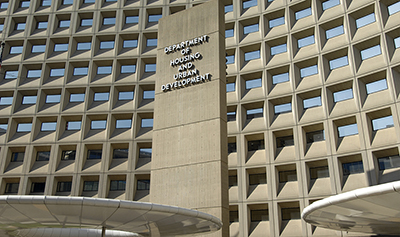
American Housing Survey: 2020, 2021 Benefited Homeowners, Challenged Renters

In general, 2020 and 2021 were good years for homeowners but challenging years for many renters, HUD and the Census Bureau said in the annual American Housing Survey.
“Since the 2019 AHS survey was conducted, homeowners saw sharp increases in home values and were able to borrow at low interest rates,” the report said. “Renters, in contrast, experienced significant cost increases, such that the median renter now pays nearly the same as the median owner in total housing costs; however, owners have many more square feet per person.”
Homeowners could also move to a better home on average when they moved, while renters were just as likely to move to a better home as a worse home, the AHS reported. Lower-income households that moved had lower rates of moving to higher-quality neighborhoods and housing units.
The AHS said self-reported homeowner home values increased “dramatically” between 2019 and 2021, homeowners increased their mortgage debt modestly and there was a sharp increase in refinancing. Homeowner-reported median home values increased 30 percent nationally in the two-year period, from $230,000 in 2019 to $300,000 in 2021. Among households with at least one mortgage, the national median total amount owed increased 11 percent from $134,695 in 2019 to $150,000 in 2021. The median owners’ interest rate on their loan declined from 4% in 2019 to 3.5% in 2021.
Median housing costs for renters rose more than owners, the report said. Between 2019 and 2021, national median monthly total housing costs increased from $1,137 to $1,200 or 5.5 percent over two years for owners and from $1,071 to $1,184, or 10.6 percent over two years for renters (excluding renters that pay no cash rent).
The survey found renters’ inability to pay rent was similar in 2021 to before the pandemic, while mortgage payment history improved. They credited the CARES Act and other interventions including federal unemployment insurance benefits and foreclosure and eviction moratoriums with helping renters and homeowners during the downturn.
Home renovations modestly increased during the pandemic, the report said. The percentage of homeowners making home improvements between 2019 and 2021 increased to 59 percent compared to 56 percent between 2017 and 2019.
The internet increased as the primary way people find rental units. Between 2019 and 2021, 21 million households moved into rental units and 14 million households moved into owned units. The internet was more widely used to find a unit to rent (43%) in 2021 than in 2019 (37%). Many renters (45%) only searched in a single neighborhood.
Among all households in 2021, relatively few called crime a problem in their neighborhoods. Nearly 17% of households believe their neighborhood has petty crime and 6% said they believe their neighborhood has a lot of serious crime.
HUD and Census release the American Housing Survey every two years to benchmark how homes age and how the occupants of homes change. The 2021 American Housing Survey examined how Americans’ relationship with their homes changed during the COVID-19 pandemic and associated lockdowns of 2020 and 2021.
